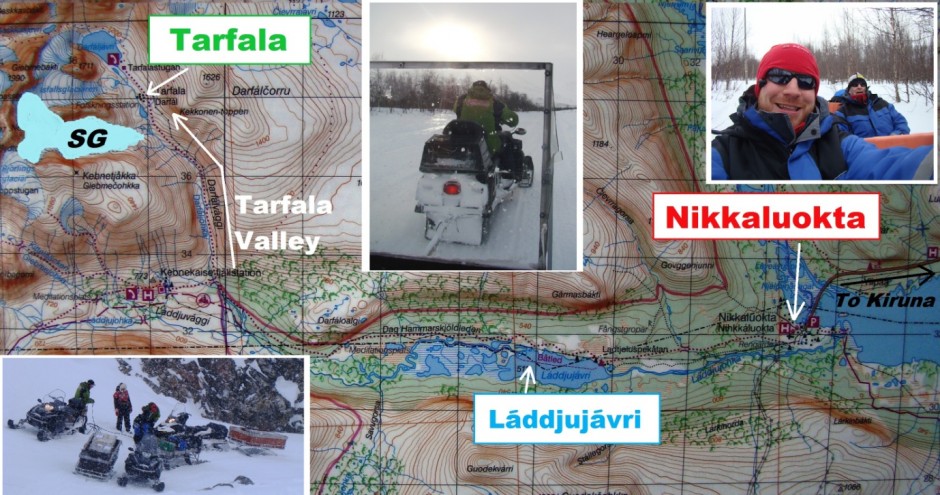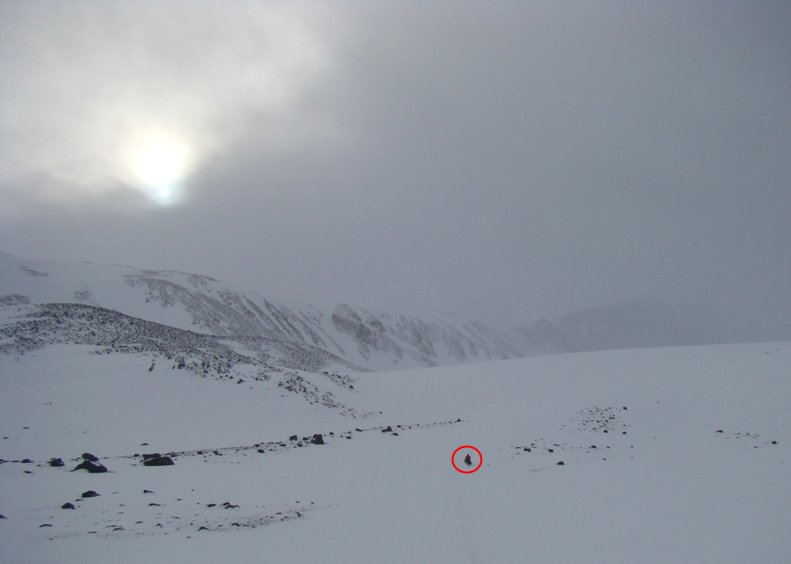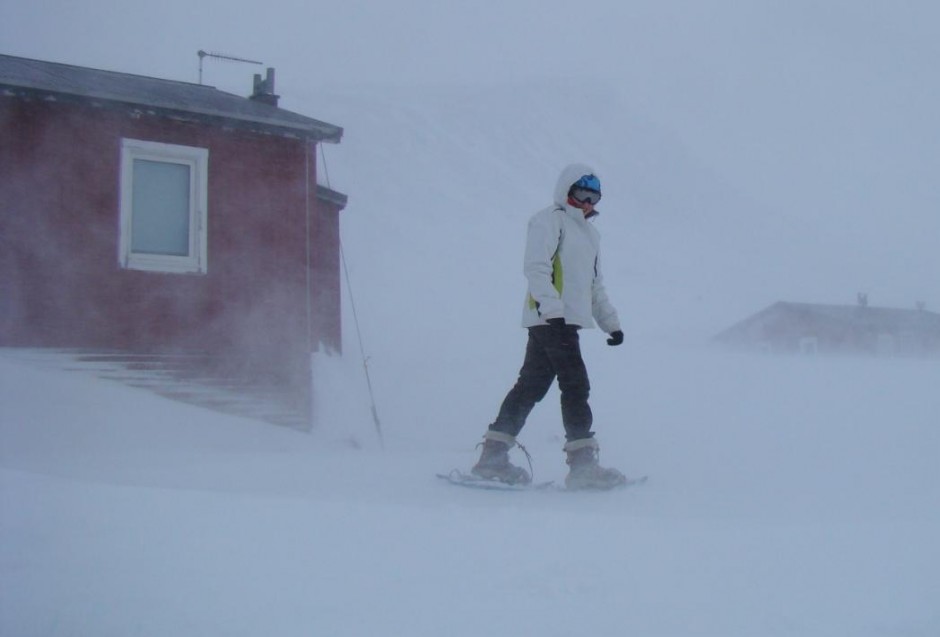As the Arctic wakes up from its polar night, Dr Adam Booth is leading a team of UK geophysicists on a two-week campaign of seismic investigations on Storglaciären, a mountain glacier in northern Sweden. He is reporting on the expedition in a series of posts published here in GeoLog. This is his second post, and the first from the research station itself. Check out the first post here.
Hello, from Tarfala Research Station! After 48 hours of travel, it’s really satisfying to be able to say these words! For those who like visualising journeys as a red line that links points on a map, Tavi, Charlotte, Roger and myself have traveled between:
• Swansea and London (by train – although Roger actually got a lift down from Leeds…),
• London and Stockholm (by plane),
• Stockholm and Kiruna (by overnight train),
• Kiruna and Nikkaluokta (by local bus), and finally
• Nikkaluokta to Tarfala Research Station (by snowmobile – see figure below for a close-up!).
Snowmobile route from Nikkaluokta to Tarfala, across Láddjujávri lake and up into Tarfala Valley; Storglaciären (SG) is highlighted, south-west of Tarfala (grid squares are 2km). Inset photos: Roger and I are all smiles, as we head out of Nikkaluokta (right). An Alltransport snowmobile under a darkening sky (centre). The Alltransport crew prepare to haul our kit up a steep slope in Tarfala Valley (left).
As lengthy as our journey was, it was only its last leg that posed any real problem – but this was most impressively overcome for us by Erik Sarri and his team of snowmobile aces at Nikkaluokta Alltransport. We left Nikkaluokta on snowmobile sleds with just a few flakes of snow in the air, although the sky became heavier as we crossed the frozen Láddjujávri lake. Twenty minutes later, we entered Tarfala Valley, where our drivers faced steep, deep snowdrifts and the occasional white-out, with a strong wind lashing the loose snow into their visors. But with a combination of experience and sheer determination, Alltransport ensured that four scientists and 400kg of seismic kit were safely delivered to Tarfala Research Station. Thanks a million to all the team!
I was last in Tarfala in summer 2009, again as part of a study of Storglaciären. Back then, every day for two weeks, Alessio Gusmeroli and I could look up to the glacier before setting off at a leisurely stroll. Right now, Storglaciären cannot even be seen from Tarfala because the wind hasn’t eased up at all (gusting at up to 80kph!) so, beyond the dozen-or-so buildings that make up the research station, the world appears completely white! To prove that Storglaciären is still there, Andreas Bergström (Tarfala’s station manager) and I tried to snowmobile a box of equipment onto the glacier this afternoon (see below).
Almost my first view of Storglaciären this spring...! I’m waiting with the equipment, while Andreas and the snowmobile (circled) attempt the climb. The view looks almost west, from the forefield of the glacier.
The complicating factor here is that the front of Storglaciären is quite steep. Whilst Andreas could get the unladen snowmobile up the slope, it got bogged down when towing cargo. It’s a problem of snow conditions: despite the wind, air temperatures are actually quite warm – it got slightly above 0°C today – and this partial melting makes the snow dense, sticky, and uncooperative when we’re struggling to tow geophysical equipment! What we need is a big chill – a calm, cold night to refreeze the snow, and we’re expecting these conditions in a few days.
So, I’m forced to hand the initial victory to the weather! But it’s not all bad news – we’ve had time today to unpack, check and organise all of our equipment, and Charlotte has been practicing walking on snowshoes. As the photographer here, I tried to follow in her footsteps, but sank straight into the thigh-deep drift! Clear proof – snowshoes really do work!
Charlotte test-driving the snowshoes around Tarfala. In my normal boots, I couldn’t stand on the same snowdrift (I’m sure it’s more about pressure than weight...!).
If the wind eases tomorrow, we’ll power up some of the equipment and test it around Tarfala, and hopefully we’ll get some kit up onto the ice. Wish us luck, and I’ll keep you posted!
Useful links: Nikkaluokta Alltransport; Alessio Gusmeroli
By Adam Booth, post-doc at Swansea University



